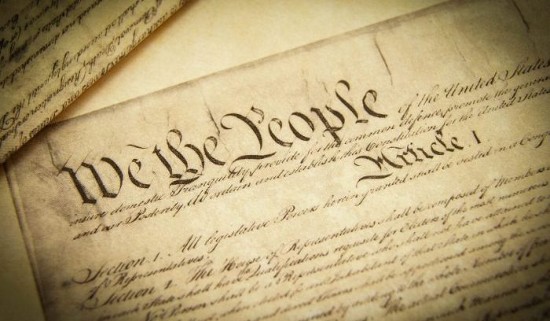While listening to the testimony of the January 6th committee of the US House of Representatives I was struck by comments that described the American Constitution as divinely inspired. The notion that a document written by a committee of aristocratic landowners and others, all white men, could produce something described as divinely inspired blew me away.
This isn’t the first time people have called documents divinely inspired. The Old and New Testaments of the Jewish and Christian faith are referred to in this way. So is the Quran and no doubt the books and words of the founders that define the Sikh, Hindu, Buddhist and Baha’i faiths? But how can these documents relate to the world we live in today. Of these only Baha’i has its origin in a world that approximates the human condition in the 21st century because it was founded in the mid-19th.
When the American Constitution was penned there were less than 800 million on Earth or just more than 10% of the current human population. Go further back to the origins of the Old and New Testaments and world population was no more than a few hundred million at best. Steam engines powered the world of the US Constitution. Water wheels automated biblical times.
The world of the US Constitution considered Africans to be property. Women’s standing was slightly better but still an afterthought in the writing of the document. The covenants of Judaism, Christianity, and Islam sanctified slavery just like the US Constitution, and women were chattels of their husbands.
What struck me watching the public proceedings of the January 6th Committee was how the witnesses testifying, and subsequently, the reporters covering the hearings repeatedly referred to the US Constitution’s divine origins.
“Divinely Inspired” Documents Are Written and Interpreted by Humans
Just in case you haven’t heard the latest US Supreme Court ruling to overthrow Roe v. Wade taking away a woman’s right to determine what she can and cannot do with her body, you now know just how flawed the US Constitution is as a divine document, and how equally flawed are those who interpret it.
Who are the latter? They are the lawyers of the land who serve in government and who defend Americans in court. The highest court of the land is the US Supreme Court with nine justices. The majority faith of the Court’s members is Catholic. More are men than women. And the majority appear to be believers in the divine origin of the US Constitution. They appear to see and interpret the document as it was conceived by its founders who lived in the 18th century which bears little resemblance to the conditions in the 21st.
Here are just a few examples of how different the founders’ world was:
- The 1789 world didn’t consider women citizens of the United States. “We the people” apparently didn’t mean women.
- “We the people” didn’t mean slaves or indigenous peoples.
- The 1789 world only counted slaves as 3/5th humans for census purposes.
- The 1789 world that produced the Second Amendment and the right to armed militias used swords, matchlocks and flintlock muskets.
- The 1789 world didn’t include the birth control pill, indoor plumbing, antibiotics, electrical power, automobiles, airplanes, trains, rockets, computers, the Internet, or robots.
Yet those who sit on the US Supreme Court in the majority today look at the US through the eyes of its founding fathers and more often than not interpret what is stated in The Constitution through a legal theory known as “originalism.”
Originalism is akin to studying the words within the document as if it were a grammar lesson. Every word is tested for original intent. Every phrase is parsed with each word dictionary-defined. Every decision becomes a legal construct with no thought or consideration of intent beyond its strict grammatical meaning, and certainly with no thought about the future.
A minority of justices sitting on the Supreme Court, however, see The Constitution as a living document with its meaning changing over time as history unfolds and society evolves.
For example, how can originalists interpret the US Constitution’s intent if tackling legal cases related to the evolution of the Internet of Things (IoT)?
How can originalists rule on actions by individuals or groups in virtual worlds and the metaverse?
How can an originalist court rule regarding environmental legislation attempting to deal with anthropogenic climate change?
How can an originalist court correct the social injustices of the past?
Think about all of the technological and social changes that have unfolded since the document was penned and how little the document speaks to any of them.
The US Constitution does have an answer in its amending formula. This is the means through acts of Congress and ratification by a super majority of states to make the document relevant as history unfolds.
But the process by which amendments get passed to become enshrined in this “divinely inspired” document is anything but divine. In fact, it is almost as rancorous as the way Americans vote for their President every four years. That’s why the Equal Rights Amendment has never been enshrined.
And if you are not aware of just how rancorous the American Presidential election can be then you have not been following the news cycle since November 3rd, 2020. Nor are you watching the January 6th committee hearings and what they tell us about how less than divinely inspired The Constitution truly is when interpreted by those with dangerous intent and ideas.
















